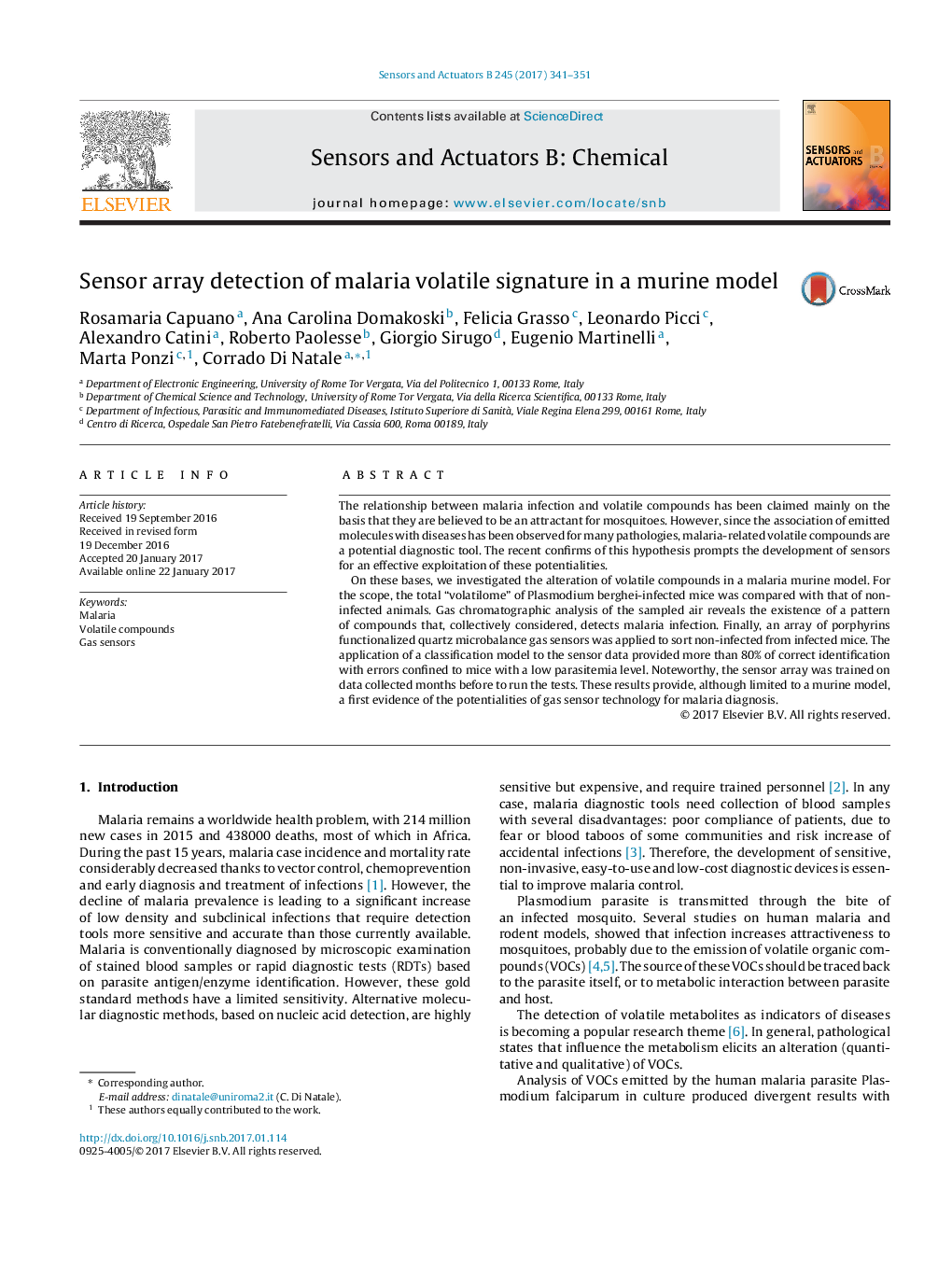| Article ID | Journal | Published Year | Pages | File Type |
|---|---|---|---|---|
| 5009896 | Sensors and Actuators B: Chemical | 2017 | 11 Pages |
Abstract
On these bases, we investigated the alteration of volatile compounds in a malaria murine model. For the scope, the total “volatilome” of Plasmodium berghei-infected mice was compared with that of non-infected animals. Gas chromatographic analysis of the sampled air reveals the existence of a pattern of compounds that, collectively considered, detects malaria infection. Finally, an array of porphyrins functionalized quartz microbalance gas sensors was applied to sort non-infected from infected mice. The application of a classification model to the sensor data provided more than 80% of correct identification with errors confined to mice with a low parasitemia level. Noteworthy, the sensor array was trained on data collected months before to run the tests. These results provide, although limited to a murine model, a first evidence of the potentialities of gas sensor technology for malaria diagnosis.
Keywords
Related Topics
Physical Sciences and Engineering
Chemistry
Analytical Chemistry
Authors
Rosamaria Capuano, Ana Carolina Domakoski, Felicia Grasso, Leonardo Picci, Alexandro Catini, Roberto Paolesse, Giorgio Sirugo, Eugenio Martinelli, Marta Ponzi, Corrado Di Natale,
